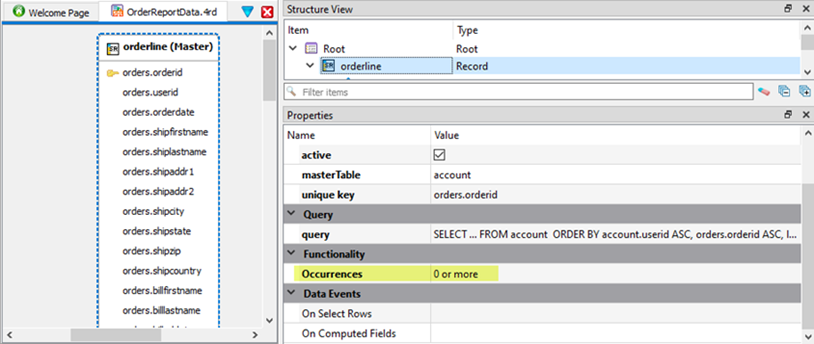Set occurrences for a record
You can define how many child records are printed for each master record.

| Option | Description |
|---|---|
| 1 |
The master record prints, and only the first fetched child record prints. All other child records are discarded. If no child rows are fetched, a child row still must print. In Java, C#, and PHP, the defaultValue property of the field is used to create the child row; if defaultValue is not set, the row will be an empty child record. In Swift, defaultValue is ignored and the row will be an empty child record by default. You can
add default values for the row using the |
| 0 or 1 |
The master record prints, and only the first fetched child record prints. All other child records are discarded. If no child rows are fetched, nothing is printed for the child record. |
| 0 or more |
The master record prints, and all fetched child records print, whether it be one child record or many child records. If no child rows are fetched, nothing is printed for the child record. |
| 1 or more |
The master record prints, and all fetched child records print, whether it be one child record or many child records. If no child rows are fetched, a child row still must print. In Java, C#, and PHP, the defaultValue property of the field is used to create the child row; if defaultValue is not set, the row will be an empty child record. In Swift, defaultValue is ignored and the row will be an empty child record by default. You can
add default values for the row using the |